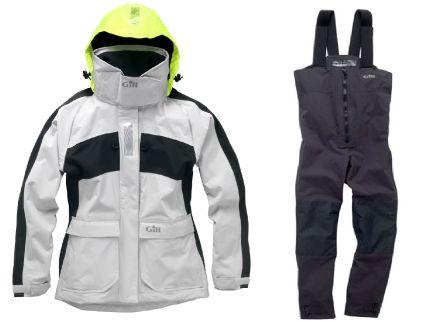The company “Solar Wind” has prepared its recommendations on how to prepare for yachting.
First of all, you need to remember that the yacht is fully equipped for life on it. Here there is hot water, a shower and a toilet, separate cabins with a bed and lockers for clothes and belongings, bed linen and towels. The kitchen has a refrigerator, gas stove (it can not be cooked even during pitching and roll), cooking utensils, tableware and appliances. But you also need to remember that there is no extra space on the yacht, everything is small, but rationally used.
You can sunbathe on the deck, swim right from the yacht, sail ashore on an inflatable boat. Every day we will be in the village where you can buy food, water, necessary things.
1. Luggage
Do not take large plastic suitcases, there is not enough space on the yacht, and you cannot always leave them in the marina on the shore. The best option is a suitcase with soft walls, which can be folded and stored in a locker.
Try not to take many things.
2. Yachting clothes and shoes
Necessarily:
- Yacht shoes must be on a white / light, non-smearing sole. The best option is to buy special yacht shoes. They look like stylish moccasins, and the white corrugated sole does not slip even on wet plastic.
- Gloves. To protect your hands while working with ropes, be sure to use yacht gloves. They are usually leather with open fingers.
- Dry suit: Jacket that protects against wind, rain and spray. Professional dry suit sew from rubberized fabric, with a hood, zippers protected from moisture, reflectors. An ordinary waterproof jacket is also suitable.
- Sweater or fleece jacket. In the evenings it can be cool, fleece jacket, pants of dense texture will help..
- Pants and shorts made of lightweight, quick-drying fabric. Jeans can be taken for a walk in the city but on a yacht they are uncomfortable and dry for a long time.
- Lightweight shirt or t-shirt with sleeve for sun protection.
- Casual shoes for walking or hiking in the city + flip flops / sandals without heels.
- Swimsuit / swimming trunks.
Optional:
- Waterproof pants or jumpsuit. Can be insulated or light type of Bologna tissue. Very comfortable in the rain and with a strong wave
- Rubber boots. It is recommended to take for hiking in the northern countries or in the rainy cool season. For ordinary trips such as Greece, Croatia, Turkey, in May-September, ordinary yacht shoes are also suitable..
- Thermal underwear. For off-season trips.
You can buy yachting equipment for amateur yachtsmen at yacht stores or the Decathlon sporting goods hypermarket, in the Sailing and Trekking sections you can find everything you need.
3. Protection
- Sun-protection cream (required!). The level of protection is from 20. On a yacht, you can get sunburn even in cloudy weather. It is recommended to take a light shirt with sleeves to protect from the sun.
- Repellent. There may be mosquitoes and midges on the shore.
- A baseball cap. In order not to fly away, you can buy a special latch and attach the cap to the collar.
- Sunglasses. A great option is polarizing glasses that soften glare. To not fly away, you can buy a special rope.
- Remedies for motion sickness: tablets, bracelets, plasters. If you have never been to the sea, or if you know for sure that you are seasick, you must take it. In general, it crashes on a yacht much less than it is customary to think about.
4. First aid kit
Each has its own set of necessary medecines. Essentials: pain medication, stomach aids, motion sickness tablets, patches, burn cream. The yacht has a stationary first aid kit with bandages and a set of medicines.
5. Personal supplies
It is recommended to take everything in small bottles and pack in a cosmetic bag. So it will be more convenient to go to the shower on the beach.
There are often washing machines in marinas, but you can also wash on a yacht.
6. Documents and money
- Passport (check the validity of the passport and visa).
- Yachtsman insurance.
- Air ticket.
- Reservation of hotels, cars, etc. (if there is).
- Information with marina address, contact numbers.
- A log book (who has it) to record campaign data. Yacht certificate.
- Bank cards (in large cities are accepted in restaurants and shops, there are ATMs). Inform your bank that you are traveling abroad so that the card is not blocked.
- Cash (can be changed at the airport).
- Money for a security deposit for a yacht (300-500 euros) and general expenses (100-200 euros per week). Money for food on shore and personal expenses..
7. Optional but useful things.
- Camera, camcorder, tablet or laptop (compact and lightweight).
- Telephone. You can buy a SIM card for travel or local.
- Sleeping bag. Compact and lightweight for lovers of aft sleep or lovers of warmth.
- Fishing rod, fishing tackle. You can go fishing at anchorage. Often enough just fishing lines, sinkers, hooks and a float.
- Music. CD or flash drive with music, guitar. The yacht has a radio, CD player.
- Extra towel, better – quick-drying microfiber.
- Waterproof case for phone and documents.
8. For captains and experienced yachtsmen
- Skipper certificate, VHF and log book.
- Walkie talkie
- Carabiners, shkertiks, a repair kit or a set of screwdrivers, a flashlight.
- Books on yachting: IRPCS 72, table of lights and signs, “Marine English”, “Yacht design” for the crew.
Have a nice sailing!


![Perchatki[1]](https://en.solarwind.si/wp-content/uploads/2013/04/Perchatki1.jpg)
![Yahtennye-tufli[1]](https://en.solarwind.si/wp-content/uploads/2018/01/Yahtennye-tufli1.jpg)